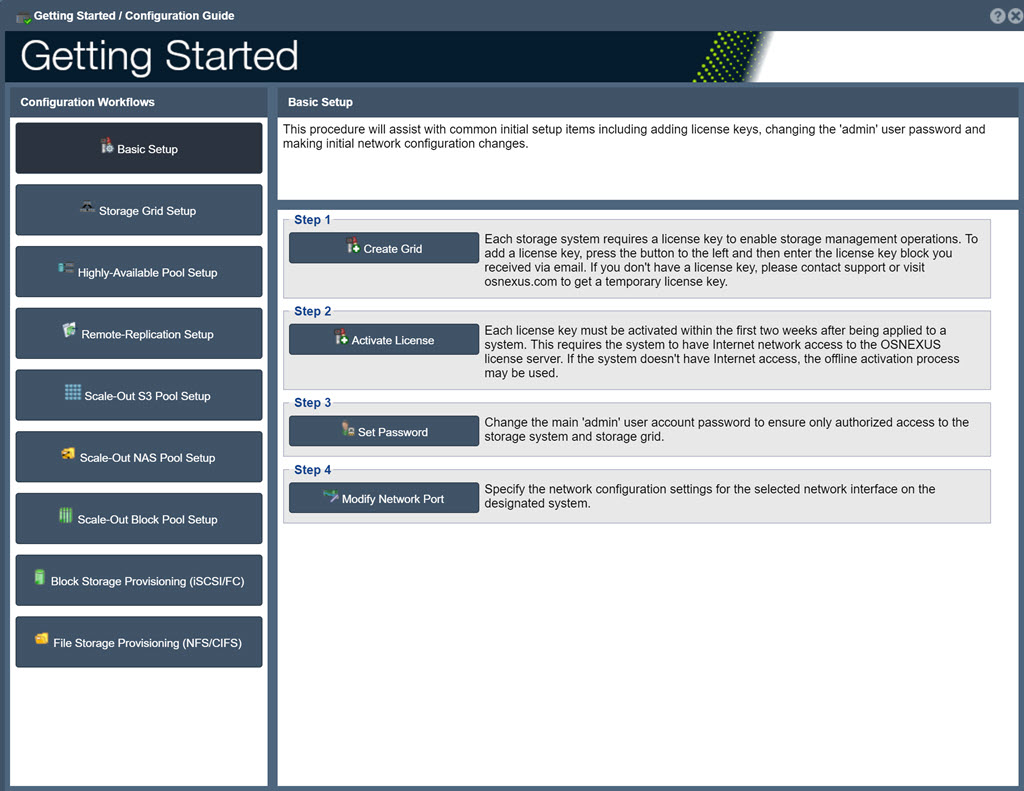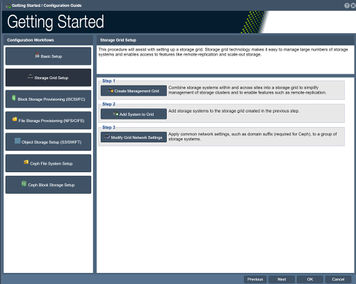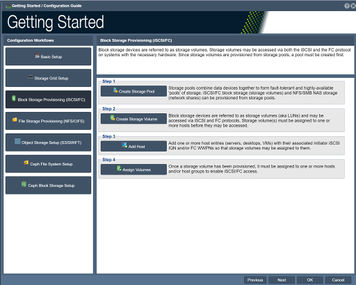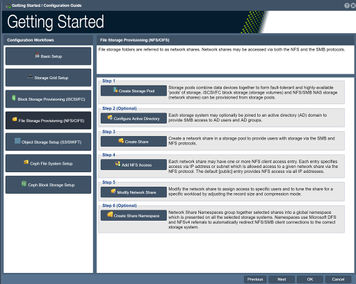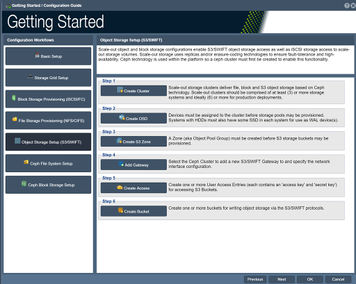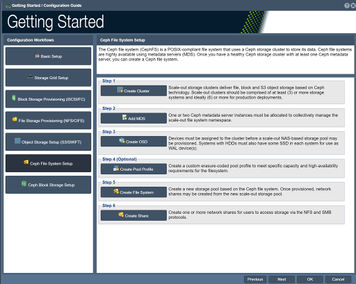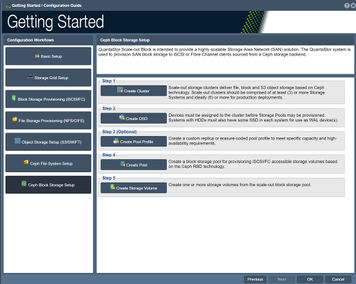Overview (Getting Started)
Getting Started/Configuration Guide
Navigation: Storage Management --> Storage System --> Storage System --> Getting Started (toolbar)
Contents
Basic Setup
This procedure will assist with the initial setup items including adding license keys, changing the 'admin' user password and making initial network configuration changes.
-Step one guides one to create a grid.
-Step two guides one to Activate a license.
-Step three guides one to change the Administrator's Password.
-Step four guides one to setup the Network Configuration.
Storage Grid Setup
This procedure will assist with setting up a Storage Grid. Storage Grid technology makes it easy to manage large numbers of Storage Systems and enables access to features like remote-replication and scale-out storage.
-Step one guides one to Create a Storage Grid.
-Step two guides one to Add Storage Systems to the Storage Grid.
-Step three guides one to Modify the Storage Grid Network Settings.
Block Storage Provisioning (iSCSI/FC)
This procedure will assist with setting up Storage Pools and Volumes.
-Step one guides one to Create a Storage Pool. Pools must be created before Volumes.
-Step two guides one to Create a Volume.
-Step three guides one to Add a Host Initiator.
-Step four guides one to Assign a Volume.
File Storage Provisioning (NFS/CIFS)
File storage folders are referred to as Network Shares. Network Shares may be accessed via both the NFS and the SMB protocols.
-Step one guides one to Create a Storage Pool.
-Step two guides one to Setup an Active Directory (optional).
-Step three guides one to Create a Network Share via SMB or NFS protocall.
-Step four guides one to Add NFS Share.
-Step five guides one to Modify a Network Share.
-Step six guides one to Create a Share Namespace.
Object Storage Setup (S3/SWIFT)
Scale-out Object and Block storage configurations enable S3/SWIFT object storage access as well as iSCSI storage access to scale-out Storage Volumes. Scale-out storage uses replicas and/or erasure-coding technologies to ensure fault-tolerance and high-availability. Ceph technology is used within the platform so a Ceph Cluster must first be created to enable this functionality.
-Step one guides one to Create an Object Storage Cluster.
-Step two guides one to Create Object Storge Devices, OSD's.
-Step three guides one to Create an S3/SWIFT Object Storage Zone, prior to provisioning of S3 storage buckets.
-Step four guides one to Select a Ceph Cluster for the S3/SWIFT Gateway.
-Step five guides one to the Creation of User Access Entries.
-Step six guides one to Create buckets for writing object storage via the S3/SWIFT protocols
Ceph File System Setup
The Ceph Filesystem, CephFS, is a POSIX-compliant filesystem that uses a Ceph Storage Cluster to store its data. Ceph File Systems are highly available using Metadata Servers, MDS. Once you have a healthy Ceph Storage Cluster with at least one Ceph Metadata Server, you can create a Ceph Filesystem.
-Step one guides one to Create an Object Storage Cluster.
-Step two guides one to Add a Metadata Server, MDS.
-Step three guides one to Assign Devices to the cluster before a scale-out NAS-based storage pool may be provisioned.
-Step four guides one to Create a Ceph Pool Profile (optional).
-Step five guides one to Create a File System.
-Step six guides one to Create a Share for user access via NFS or SMB.
Ceph Block Storage Setup
QuantaStor Scale-out Block is intended to provide a highly salable Storage Area Network solution where the QuantaStor system is used to provision SAN block storage to iSCSI or Fiber-Channel clients sourced from a Ceph storage backend.
-Step one guides one to Create an Object Storage Cluster.
-Step two guides one to Create Object Storage Devices, OSD's.
-Step three guides one to Create a Custom Replica or erasure-coded pool profile (optional).
-Step four guides one to Create block Scale-out Storage Pools, Ceph Pools.
-Step five guides one to Create Scale-out Storage Volumes, Ceph RBDs.
